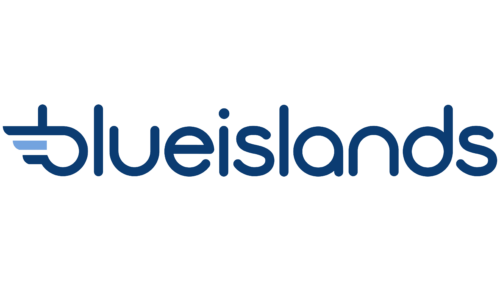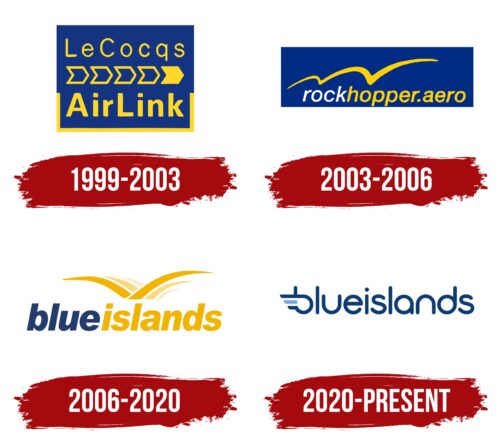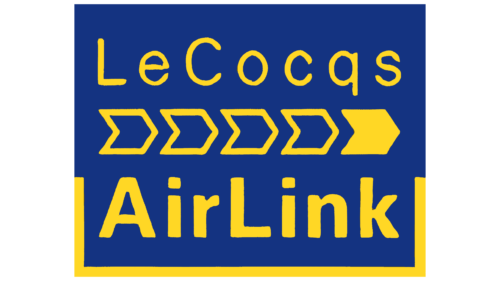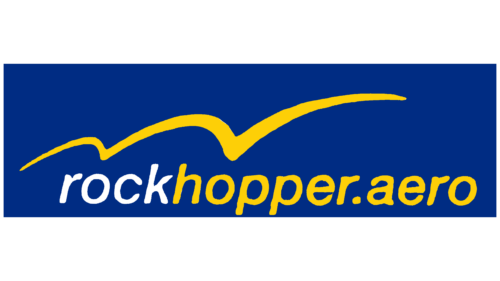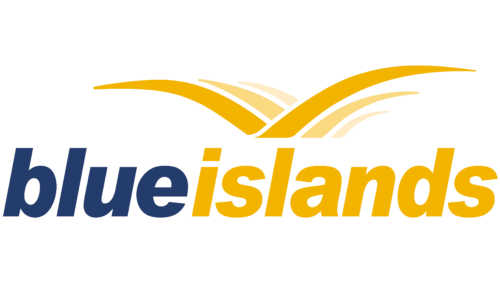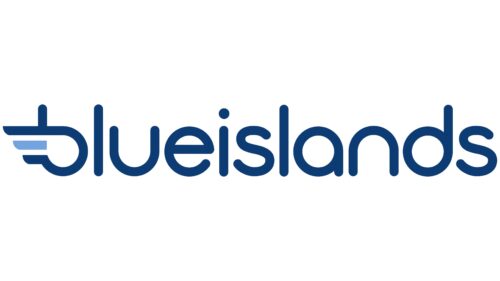The Blue Islands logo captures the essence of the Channel Islands, where the airline is based. It reflects the company’s mission to connect these picturesque islands with mainland Great Britain and beyond, enhancing accessibility and promoting tourism. The logo embodies the islands’ natural beauty and tranquil spirit, incorporating deep blues from the surrounding sea and sky, which are integral to the region’s identity. This symbol underscores the airline’s role in strengthening connections with the local community and supporting travel and economic opportunities for island residents.
Blue Islands: Brand overview
Blue Islands began its journey in 1999 as Le Cocq’s Airlink, based in Forest Guernsey. It primarily offered charter and specialized aviation services around the Norman Isles. This modest start marked the beginning of its transformation into regional air transport.
In 2003, after several years of growth, the company rebranded to Rockhopper, focusing on regular passenger services between Guernsey, Jersey, and nearby airports in the UK and France. In 2006, it adopted a new name three years later, aiming to become the region’s leading air service provider.
From 2007 to 2010, it expanded its network by adding new routes and increasing flight frequencies. It established bases in Guernsey and Jersey, providing comprehensive services to the main Channel Islands.
From 2011 to 2015, the airline continued to grow despite economic instability and competitive pressures. It introduced larger, modern aircraft like the ATR 42 and ATR 72 and innovative “on-demand” inter-island flights.
Under the leadership of CEO Rob Veron from 2016 to 2020, the strengthened its market position and financial health. It formed strategic partnerships with airlines such as Flybe and LoganAir and invested in new technologies and customer-focused initiatives.
During the pandemic, the company faced significant challenges. It adapted operations quickly and implemented strict safety protocols to maintain vital services. It has been an integral part of the Channel Islands community, providing reliable and vital air transport that connects people, supports the economy, and contributes to the region’s prosperity.
Meaning and History
What is Blue Islands?
It is a regional airline based in the Channel Islands, specifically Jersey and Guernsey. It operates flights connecting the Channel Islands to the UK and Europe, serving business and leisure travelers. The airline offers a wide range of services, supporting the local economy and providing essential transportation links for islanders and visitors.
1999 – 2003
From 1999 to 2003, Blue Islands used its first emblem, which symbolized the start of its journey in the aviation industry. The emblem featured a directional arrow against a vast sky, metaphorically representing the direction and opportunities opening up for the company and its clients.
The emblem’s primary element, the inscription “Le Cocqs Airlink,” references the company’s modest beginnings. Originally, Blue Islands was a small operation that organized flights between islands primarily to deliver fresh fruits and vegetables from the Le Cocqs Store. This activity gradually evolved into organizing regular flights and providing essential transportation links for the local population.
The inscription on the emblem symbolized the air message the company offered to the island residents—fast, reliable, and affordable. The air arrow, depicted as a directional indicator, emphasized this idea and visually guided the gaze, indicating the direction of movement and the path passengers should choose. This arrow became a symbol of navigation and progress, indicating the expansion of the route network and reinforcing the company’s role as a key carrier in the region.
2003 – 2006
In 2003, Blue Islands introduced a new logo. Although it kept the previous color palette, the design and concept changed considerably. The central feature of this logo is a yellow wavy line, thoughtfully designed to visually represent the sensation of flying over sea waves and drawing attention to the airline’s distinctive routes over bodies of water.
The yellow line enhanced the logo’s dynamism and visual attractiveness and symbolized the freedom and ease that passengers could expect during their journeys with Blue Islands. Yellow was chosen for its associations with the sun, joy, and energy, complementing the company’s goal to provide customers with enjoyable and uplifting travel experiences.
The logo incorporated the website address for Rockhopper, indicating the airline’s new commercial name. This detail underscored the company’s modern approach to customer service, offering an easy method for online bookings and ticket purchases. The name “Rockhopper” set the brand apart from competitors and evoked ideas of mobility and accessibility, the key to attracting new customers and keeping existing ones.
2006 – 2020
By 2006, Blue Islands had refreshed its brand and symbolically spread its wings, highlighted by a new name and logo. The name “Blue Islands” was chosen to reflect the uniqueness of the Norman Islands, which on a clear day appear slightly bluish, mirroring the sky color in the surrounding sea waters.
The company logo was thoughtfully designed to convey the new brand philosophy. The name “Blue Islands” is written as one word but divided into two parts using blue and yellow colors. This color combination symbolizes the merging of the sky’s blue and the bright sun, creating an image of warmth and freshness associated with the islands. Such a design emphasizes the connection with the natural beauty of the places the company connects through its flights.
Above the name, a yellow bird is depicted flapping its wings. This bird is not merely decorative; it symbolizes the company’s airplanes, highlighting their ability to move through the air freely and effortlessly. The depiction of three sequential bird figures creates an impression of movement, of flight. This design element visually demonstrates how the place where the liner just gradually faded into the air as the plane continued forward.
The logo is imbued with dynamism, optimism, and strength, reflecting the company’s commitment to expanding flight geography and improving service quality, making travel more enjoyable and comfortable for every passenger.
2020 – today
The Blue Islands logo is designed as a single word, “blueislands,” with all lowercase letters and no space between “blue” and “islands.” The dark blue color represents the sky, aligning with the company’s name and conveying trust and reliability. The initial “b” is stylized to look like a wing, with the rounded part extending into elongated horizontal feathers, symbolizing movement and freedom.
Using lowercase letters and merging the two words emphasizes unity and cohesion, symbolizing the seamless connection between the sky and the islands. The soft and airy font style adds a sense of lightness and approachability, reflecting the airline’s commitment to providing a welcoming travel experience.
The design elements work together to create a cohesive and impactful visual identity. The winged “b” and the airy font enhance the logo’s representation of freedom and lightness, essential qualities for an airline. The overall design ensures the logo is aesthetically pleasing and deeply connected to the brand’s values.
FAQ
Where is Blue Islands based?
The airline is based in the Channel Islands, and its main operations are in Guernsey. The main office is in the parish of Forest, Guernsey, with a further office in St Ann’s, Alderney. These offices help the company maintain its flight schedule smoothly. Most flights depart from Guernsey Airport and Jersey Airport. This installation helps connect people in the Channel Islands and places in the UK and Europe. These airports are critical as they support its role in connecting the Channel Islands with other regions and countries.
What aircraft do Blue Islands use?
The airline operates only ATR turboprop aircraft in its fleet. These aircraft are known for fuel efficiency, making them a cost-effective option. ATR aircraft are widely used in the aviation industry, with one taking off or landing every eight seconds worldwide. This shows that they are reliable and trusted by many airlines. Using ATR helps to offer efficient and sustainable services on its routes.
Is Blue Island part of Flybe?
The company is a Flybe franchise partner. Although operating under the Flybe brand, it remains independent with its aircraft and crew. The partnership leverages Flybe’s sales and distribution channels, helping it reach more customers. Despite close cooperation with Flybe, it remains a separate company and operates independently. This structure allows you to benefit from Flybe’s visibility and network while maintaining your distinct operating style.
